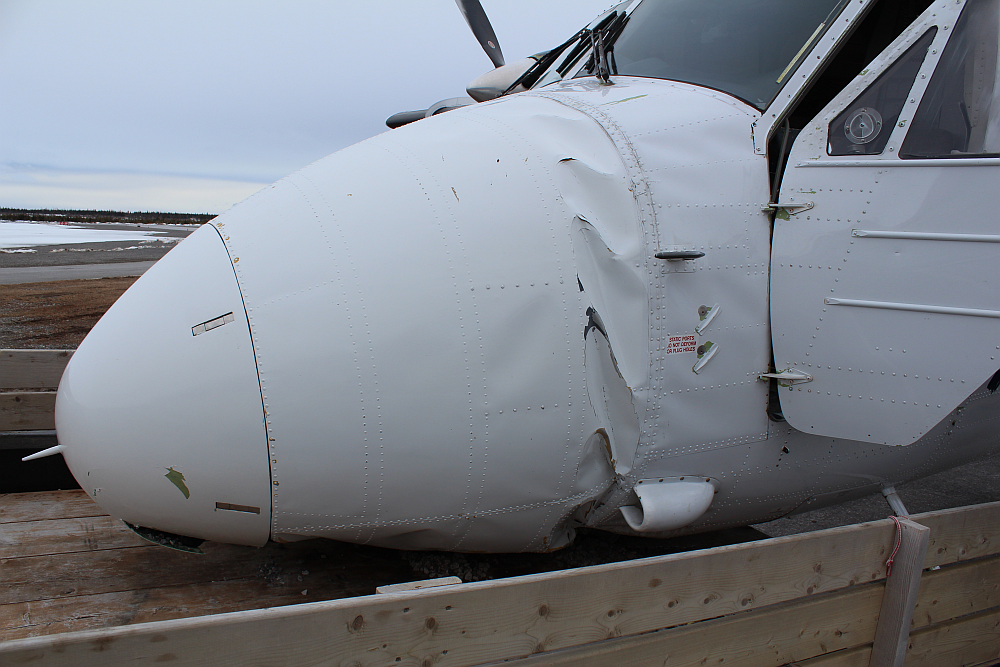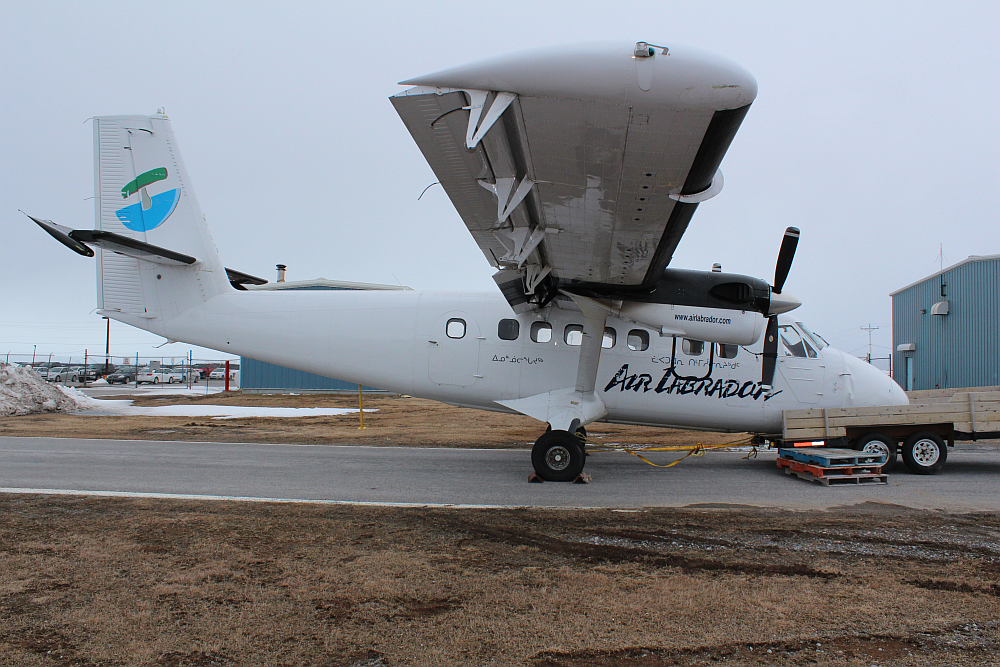Air transportation safety investigation A13A0033
The TSB has completed this investigation. The report was published on 25 April 2014.
Table of contents
Nosewheel failure on landing
Air Labrador Limited
de Havilland DHC-6-300, C-FOPN
St. Anthony, Newfoundland and Labrador
The occurrence
The de Havilland DHC-6-300 Twin Otter aircraft (registration C FOPN, serial number 291) was landing at St. Anthony Airport, Newfoundland and Labrador, with 2 crew members and 8 passengers on board. The aircraft first contacted the runway with the left tire, bounced, and became airborne before touching down hard on the nosewheel. The nose landing gear collapsed, and the aircraft skidded on its nose, coming to rest 96 feet off the north side of Runway 10. There were no injuries. The aircraft was substantially damaged. The 406-megahertz emergency locator transmitter did not activate. The accident occurred at 1253 Newfoundland and Labrador Daylight Time.
Media materials
News release
Last-second transfer of control led to 2013 landing accident in St. Anthony, Newfoundland and Labrador
Read the news release
Deployment notice
Transportation Safety Board of Canada deploys a team of investigators to the site of an aircraft accident at the St. Anthony Airport, Newfoundland and Labrador
Gatineau, Quebec, 28 March 2013 — The Transportation Safety Board of Canada (TSB) is deploying a team of investigators to the airport in St. Anthony, Newfoundland and Labrador. A de Havilland Canada DHC-6 Twin Otter experienced a nose wheel failure while landing. The team will gather information and assess the occurrence.
Investigation information
Map showing the location of the occurrence
Investigator-in-charge

Bruce Mullen joined the TSB in May of 2010 with over 27 years and 8000 hours of flight experience in various types of aircraft. Prior to joining the TSB, he was a member of the Royal Canadian Mounted Police for almost 25 years; 9 of which were spent in Alberta as an RCMP investigator/Peace Officer.
Mr. Mullen also spent several years with the Department of Fisheries and Oceans as a research scientist and co – authored several Fisheries Research Publications.
Photos
Click on the images to see them in full size.
Download high-resolution photos from the TSB Flickr page.
Class of investigation
This is a class 3 investigation. These investigations analyze a small number of safety issues, and may result in recommendations. Class 3 investigations are generally completed within 450 days. For more information, see the Policy on Occurrence Classification.
TSB investigation process
There are 3 phases to a TSB investigation
- Field phase: a team of investigators examines the occurrence site and wreckage, interviews witnesses and collects pertinent information.
- Examination and analysis phase: the TSB reviews pertinent records, tests components of the wreckage in the lab, determines the sequence of events and identifies safety deficiencies. When safety deficiencies are suspected or confirmed, the TSB advises the appropriate authority without waiting until publication of the final report.
- Report phase: a confidential draft report is approved by the Board and sent to persons and corporations who are directly concerned by the report. They then have the opportunity to dispute or correct information they believe to be incorrect. The Board considers all representations before approving the final report, which is subsequently released to the public.
For more information, see our Investigation process page.
The TSB is an independent agency that investigates air, marine, pipeline, and rail transportation occurrences. Its sole aim is the advancement of transportation safety. It is not the function of the Board to assign fault or determine civil or criminal liability.

